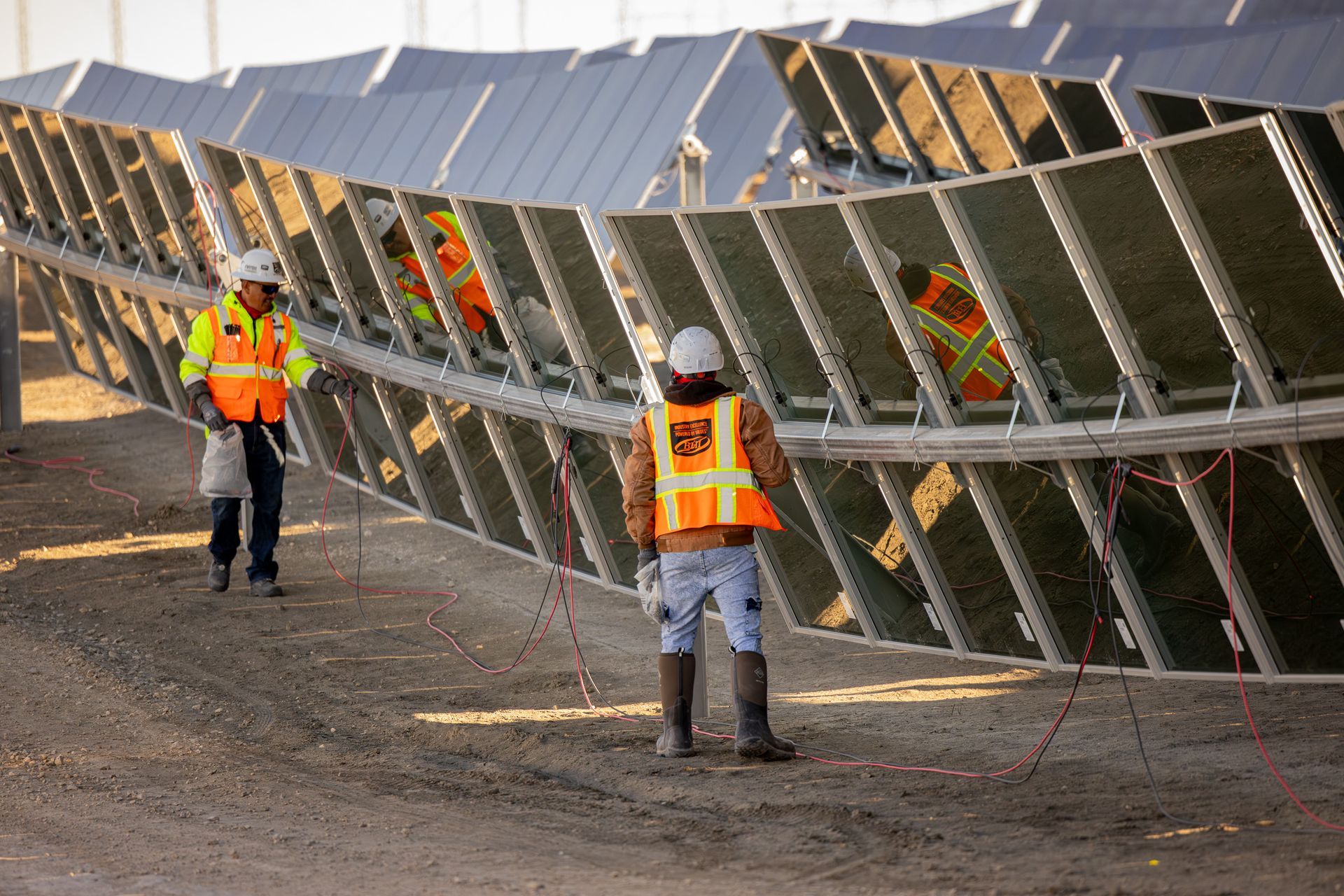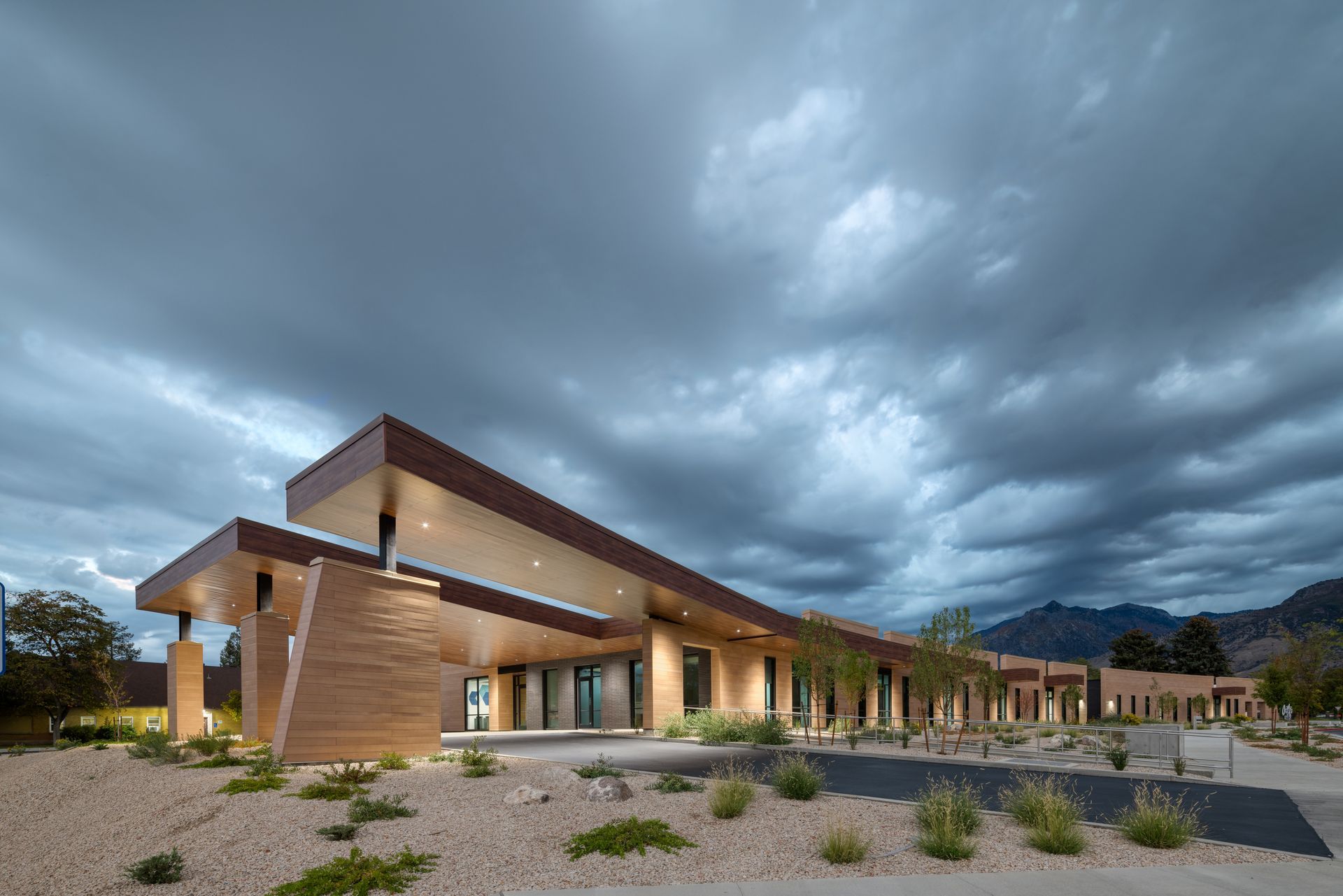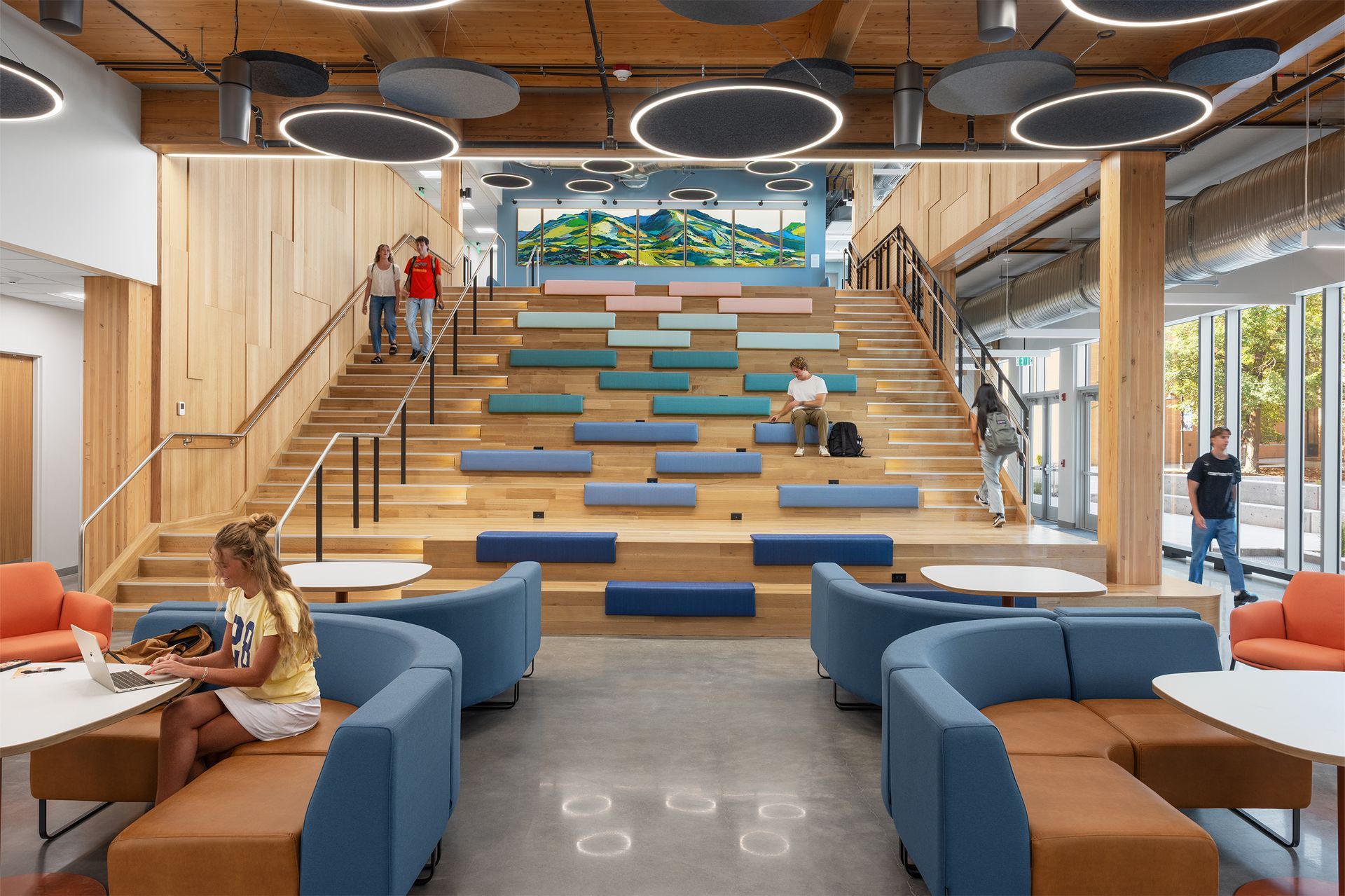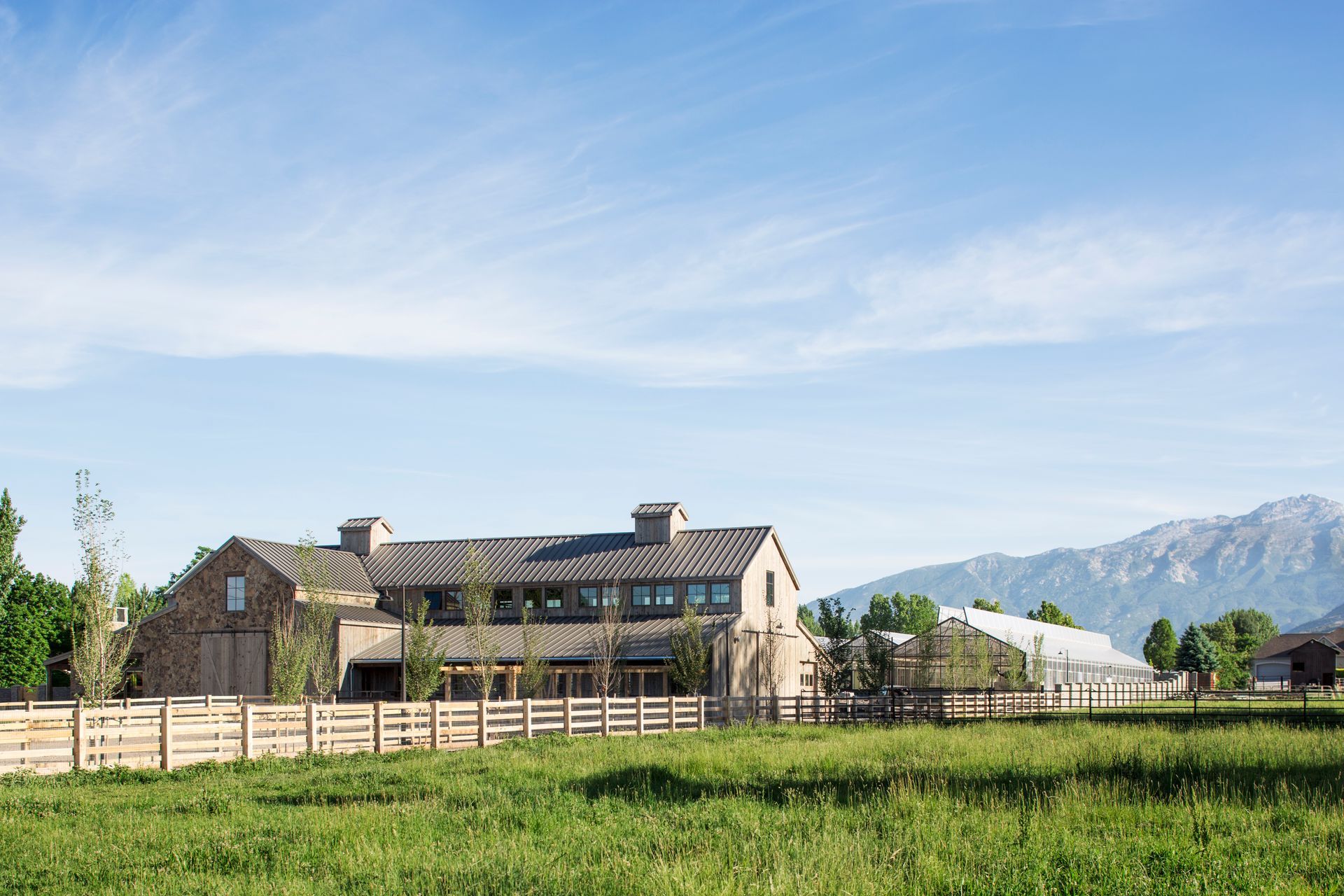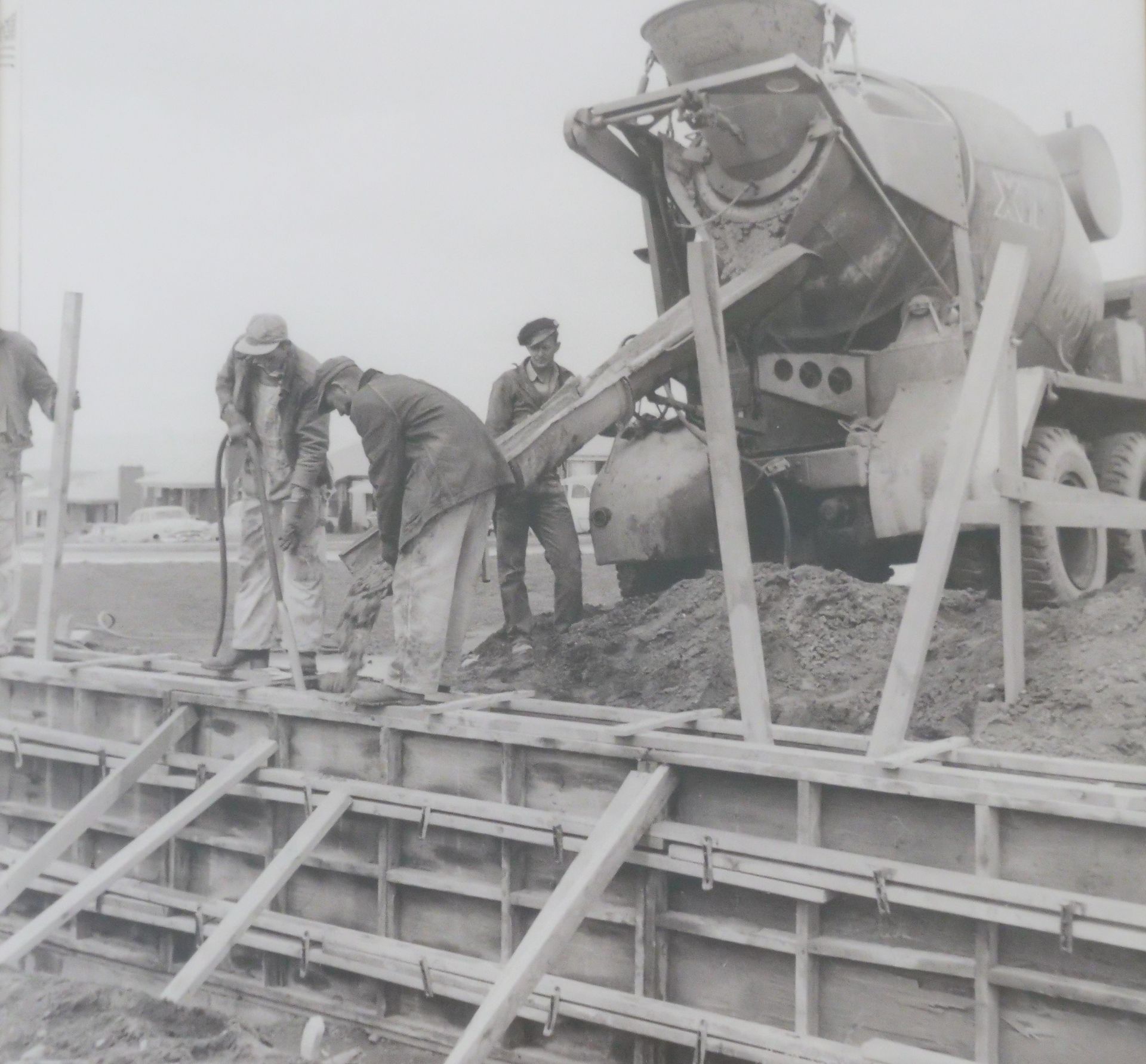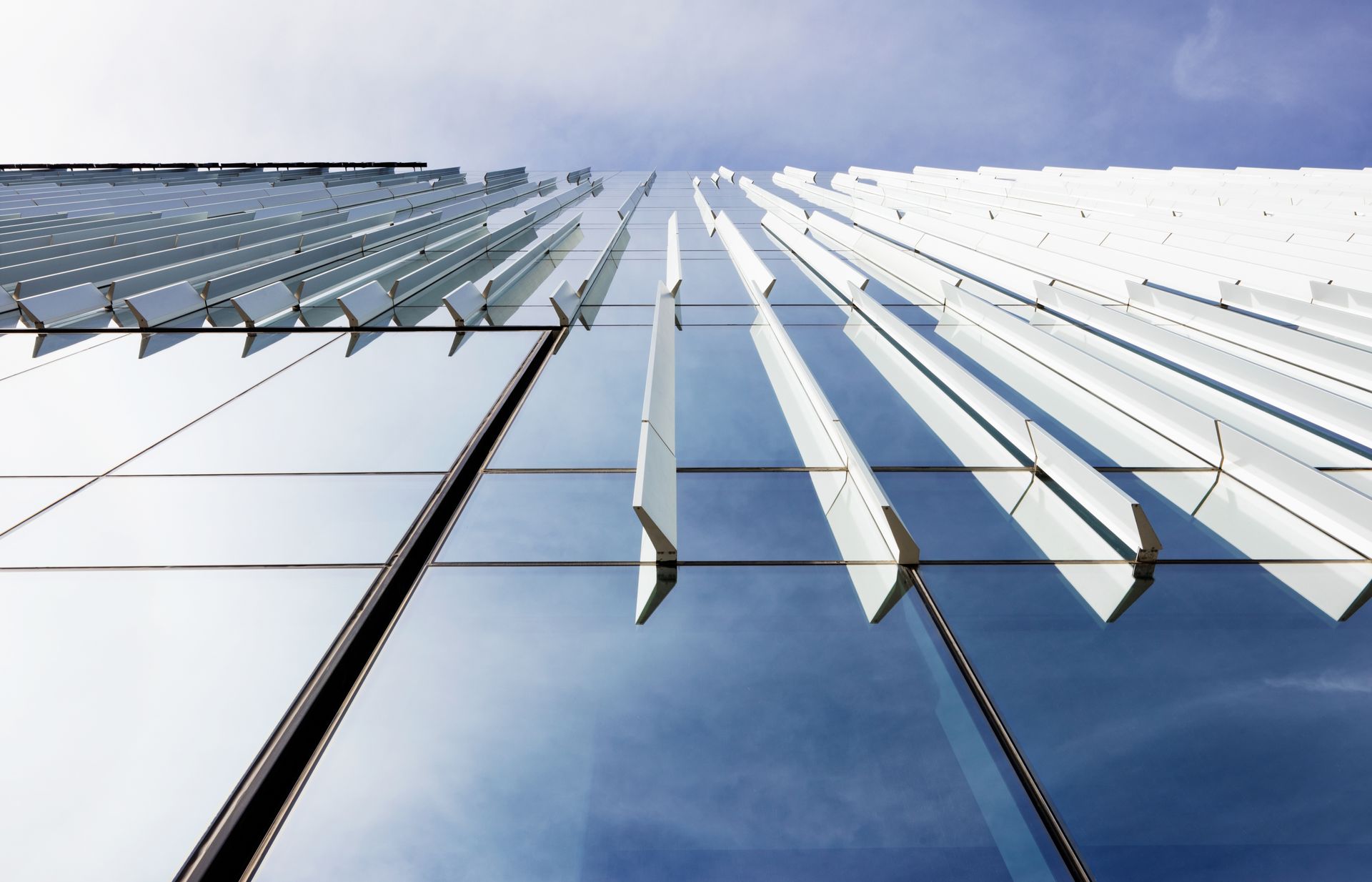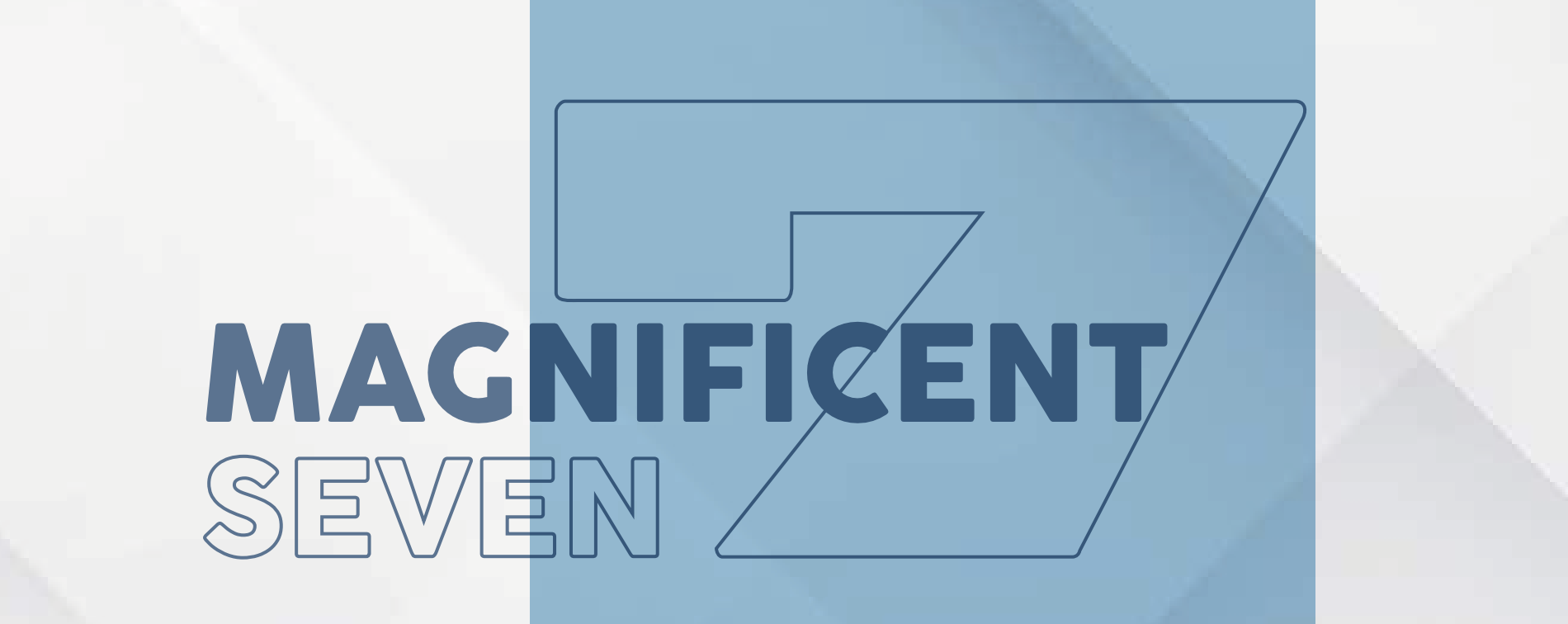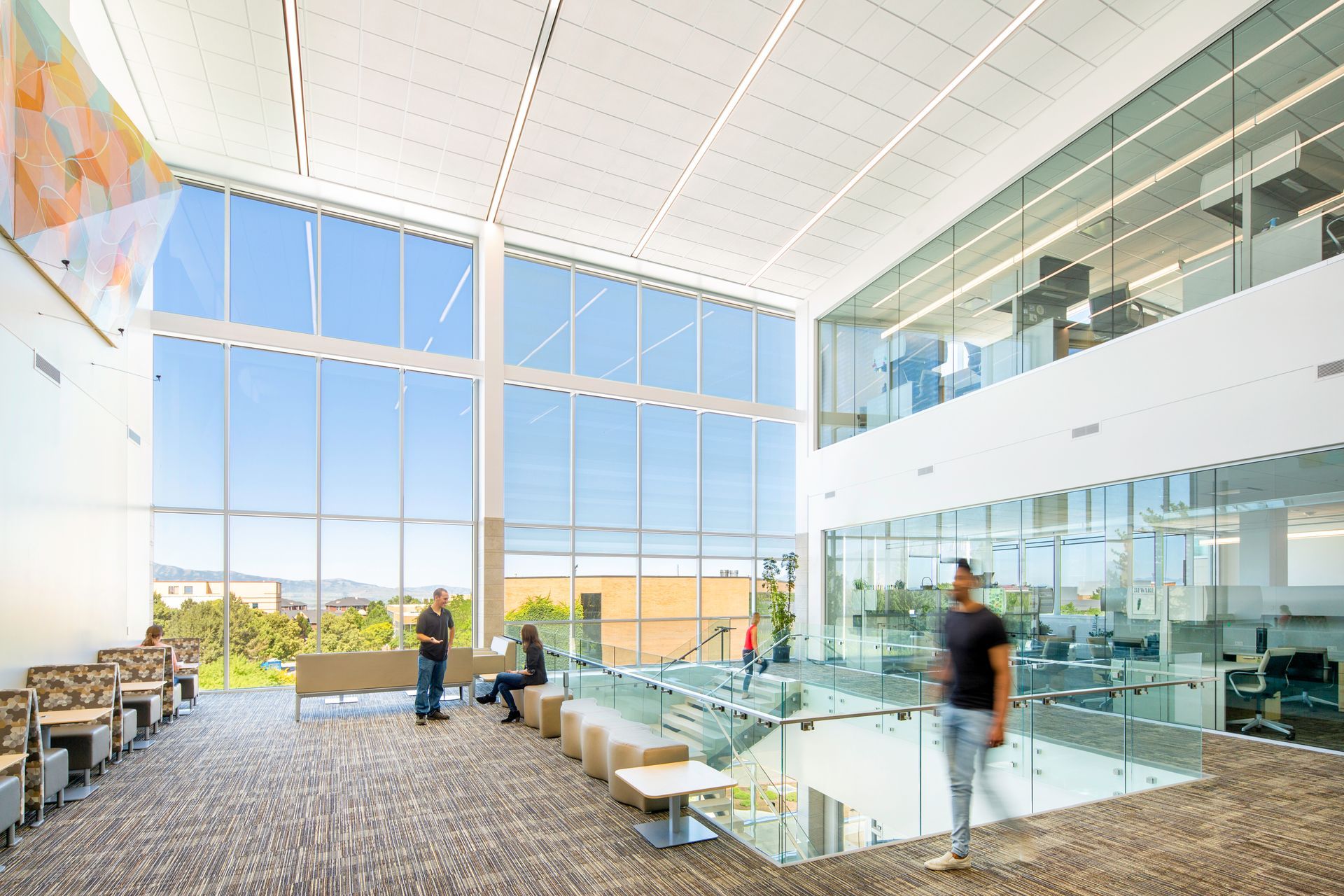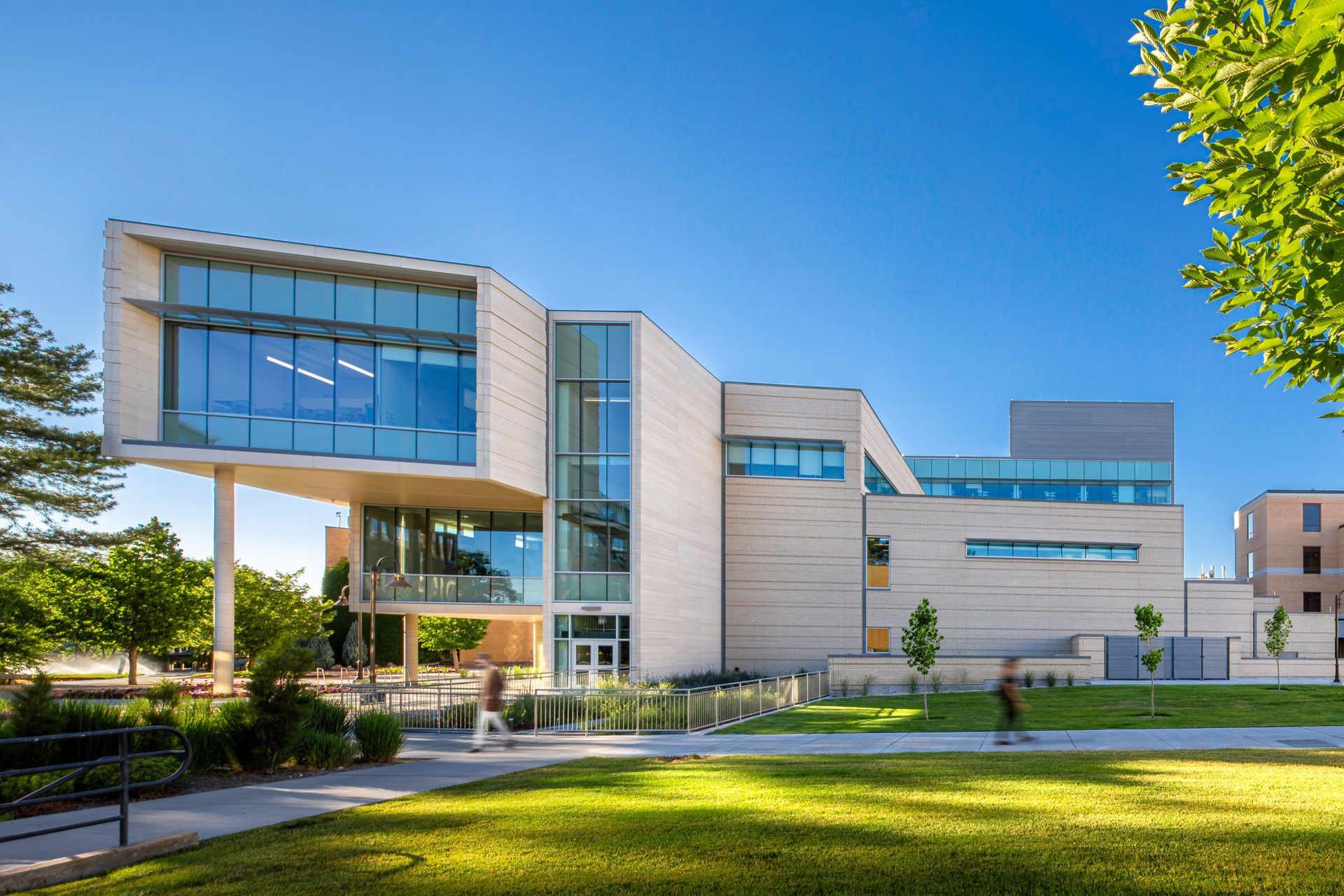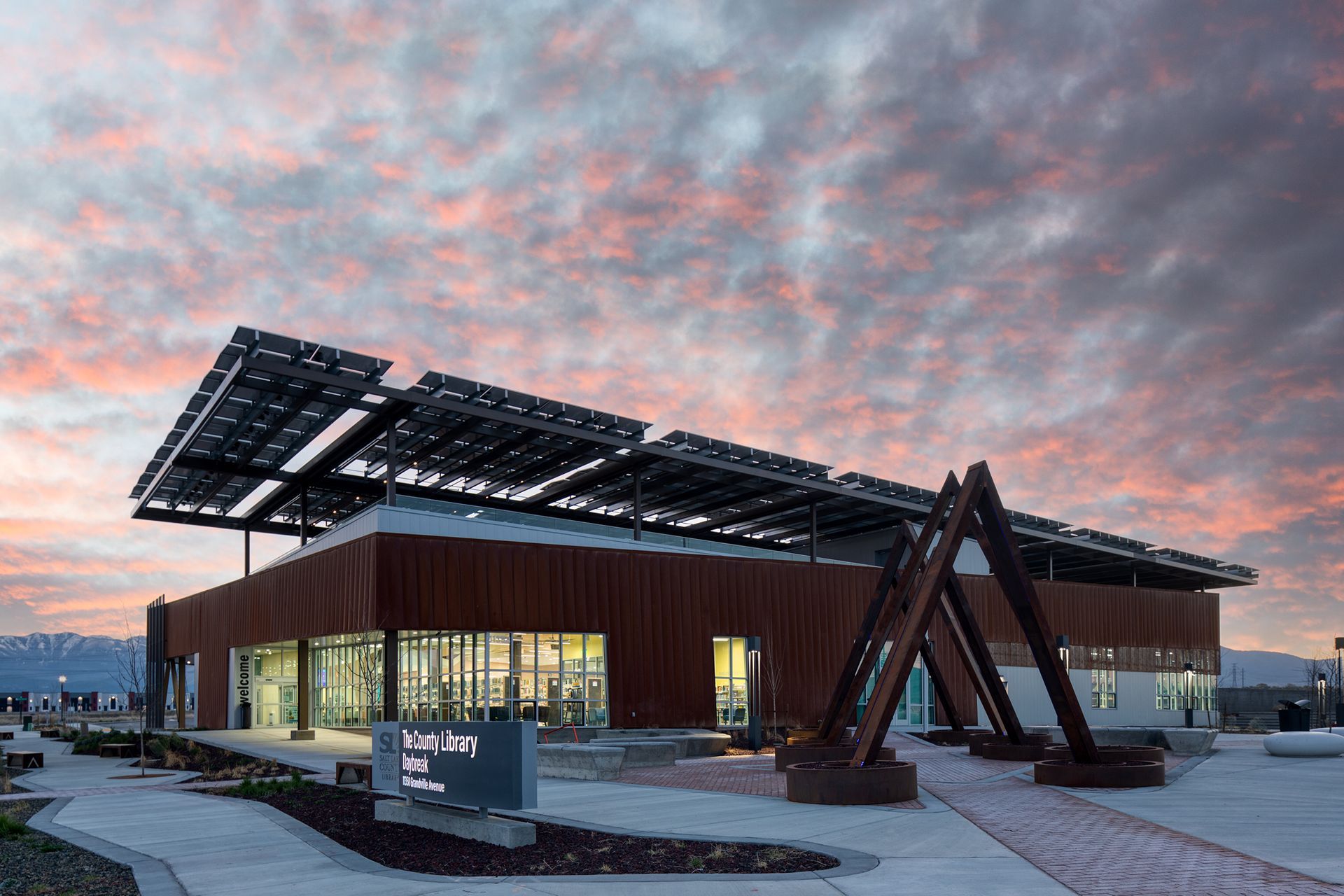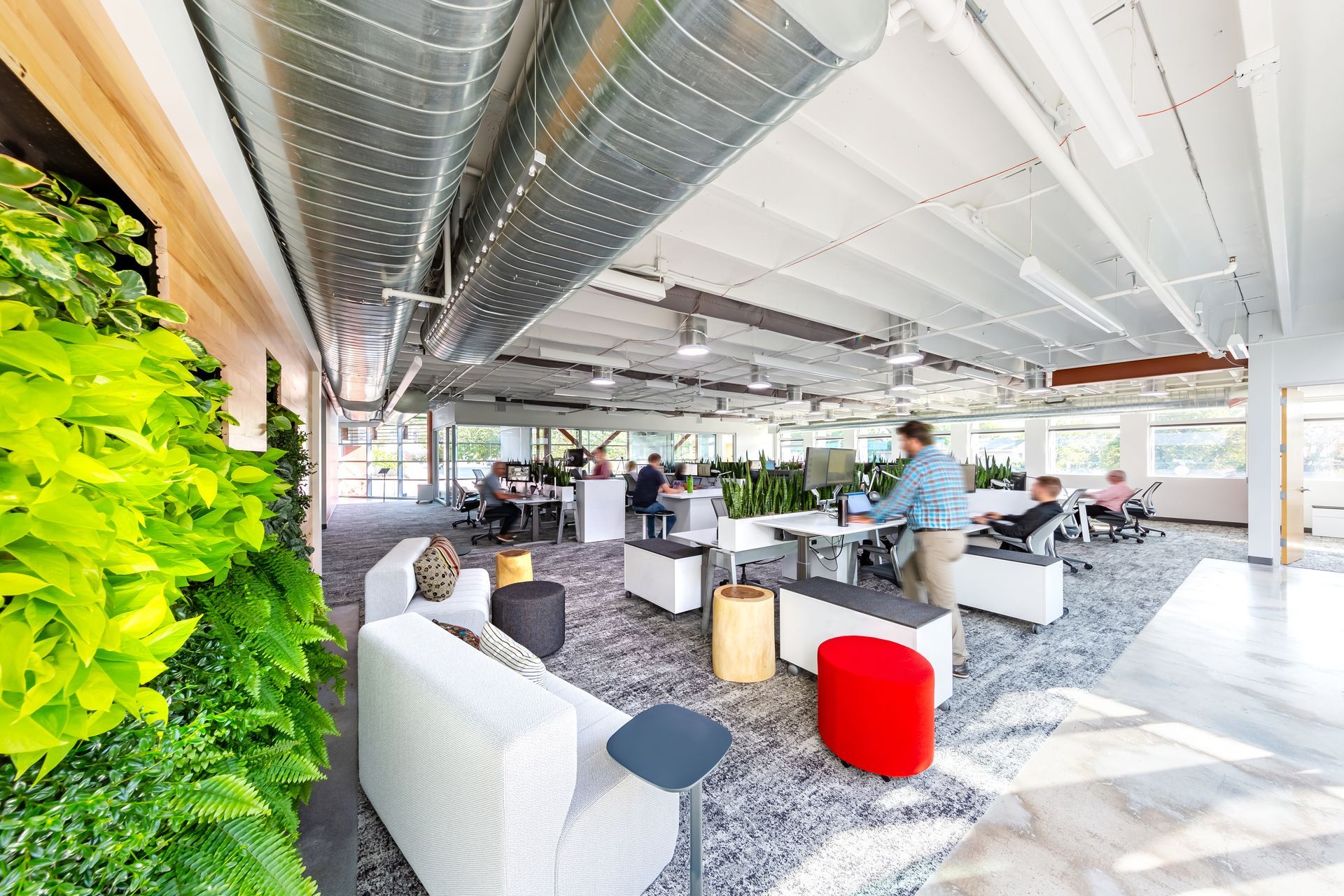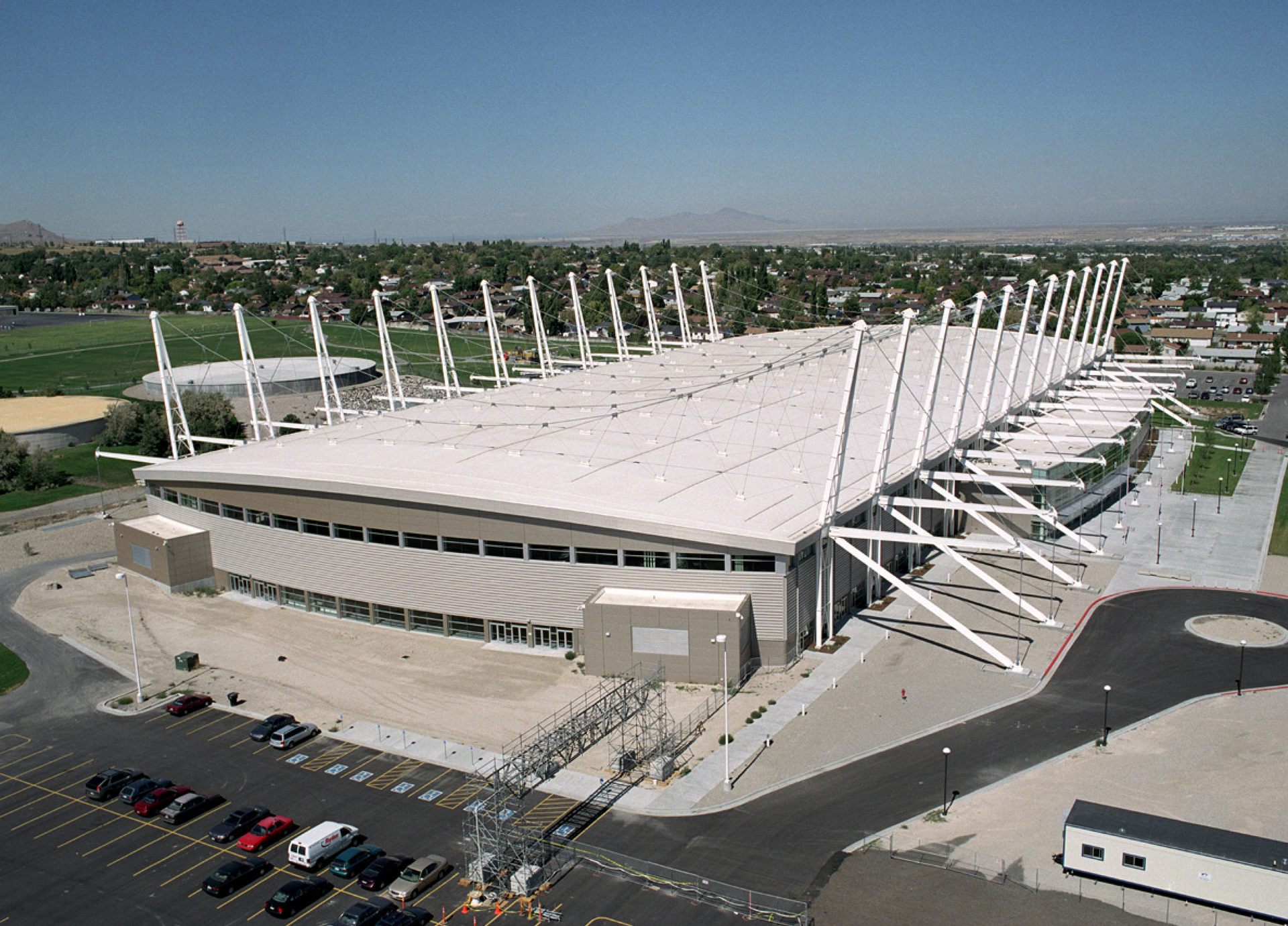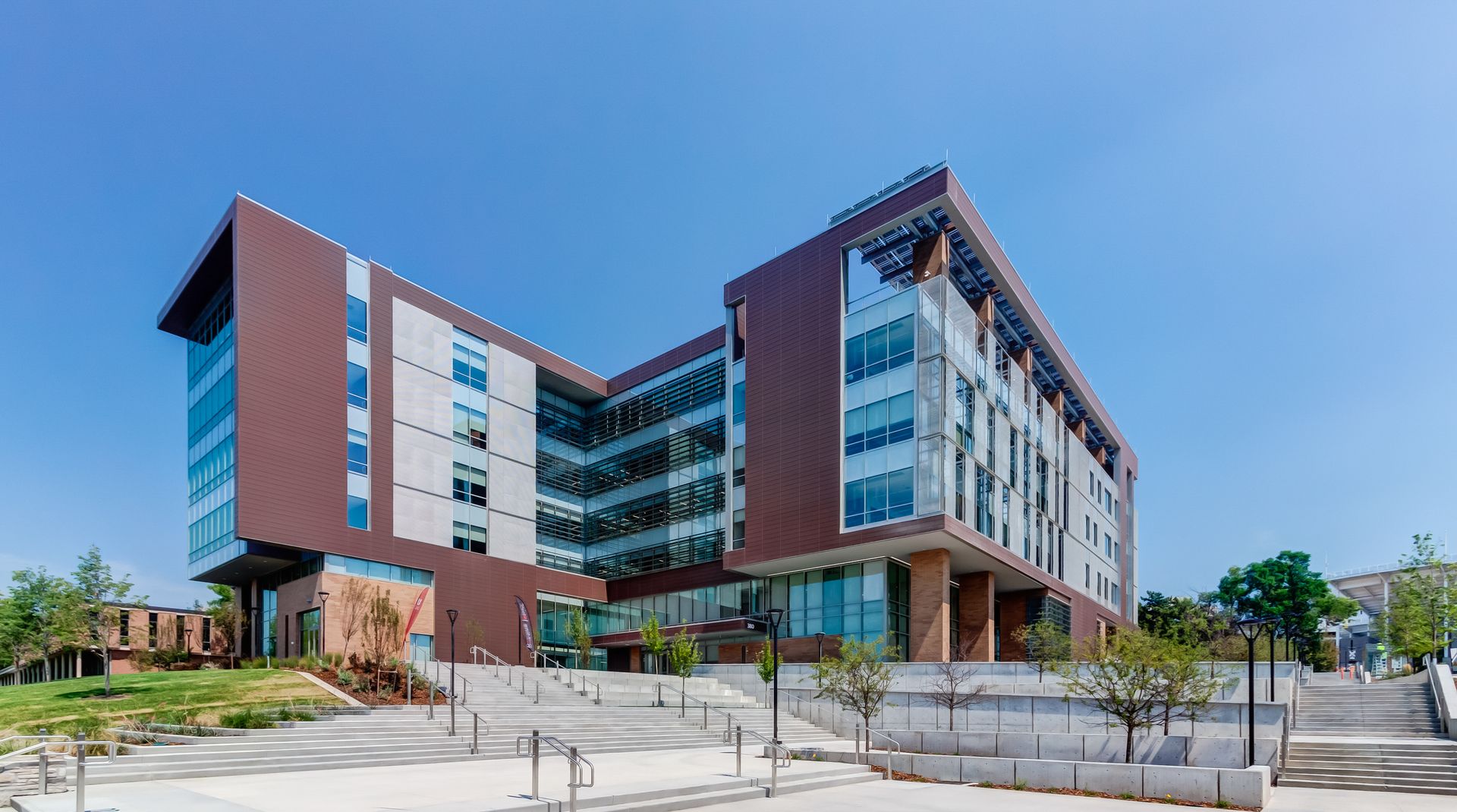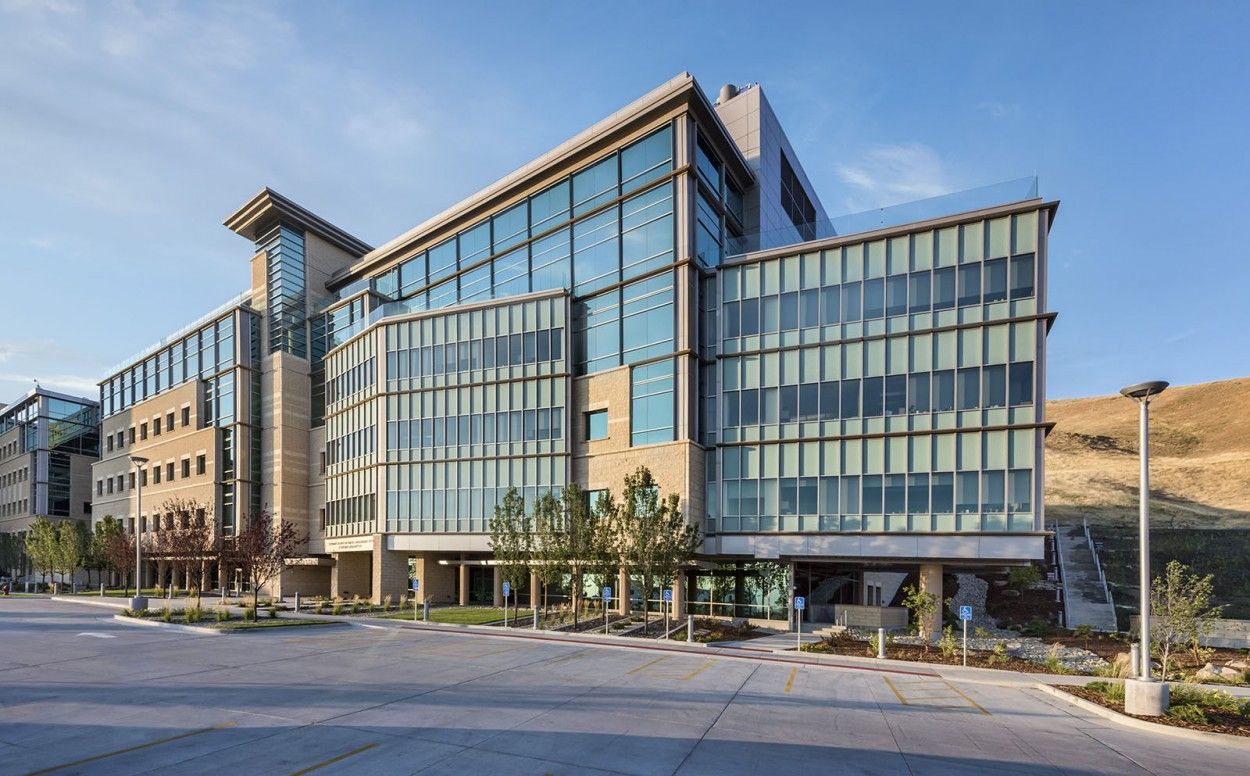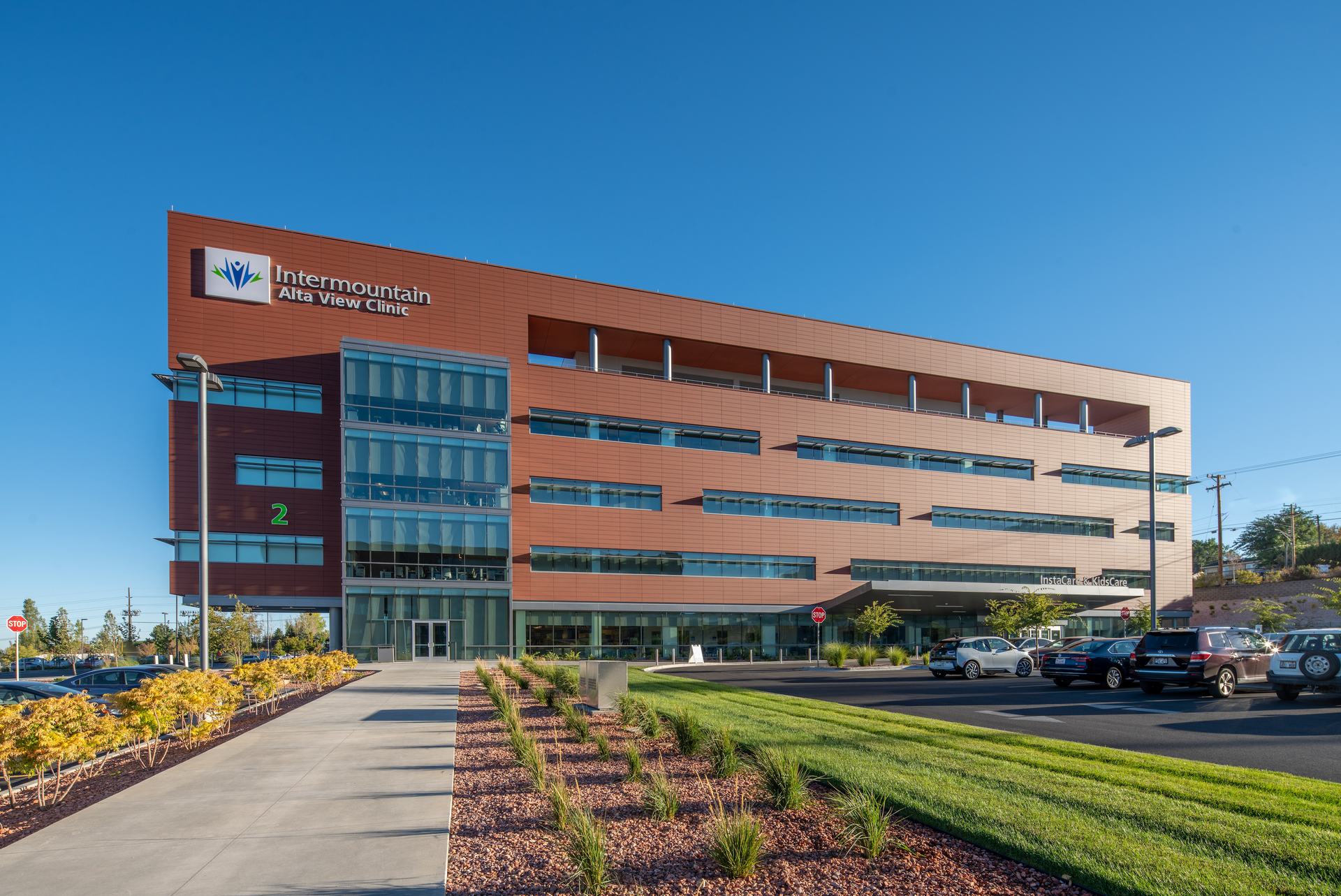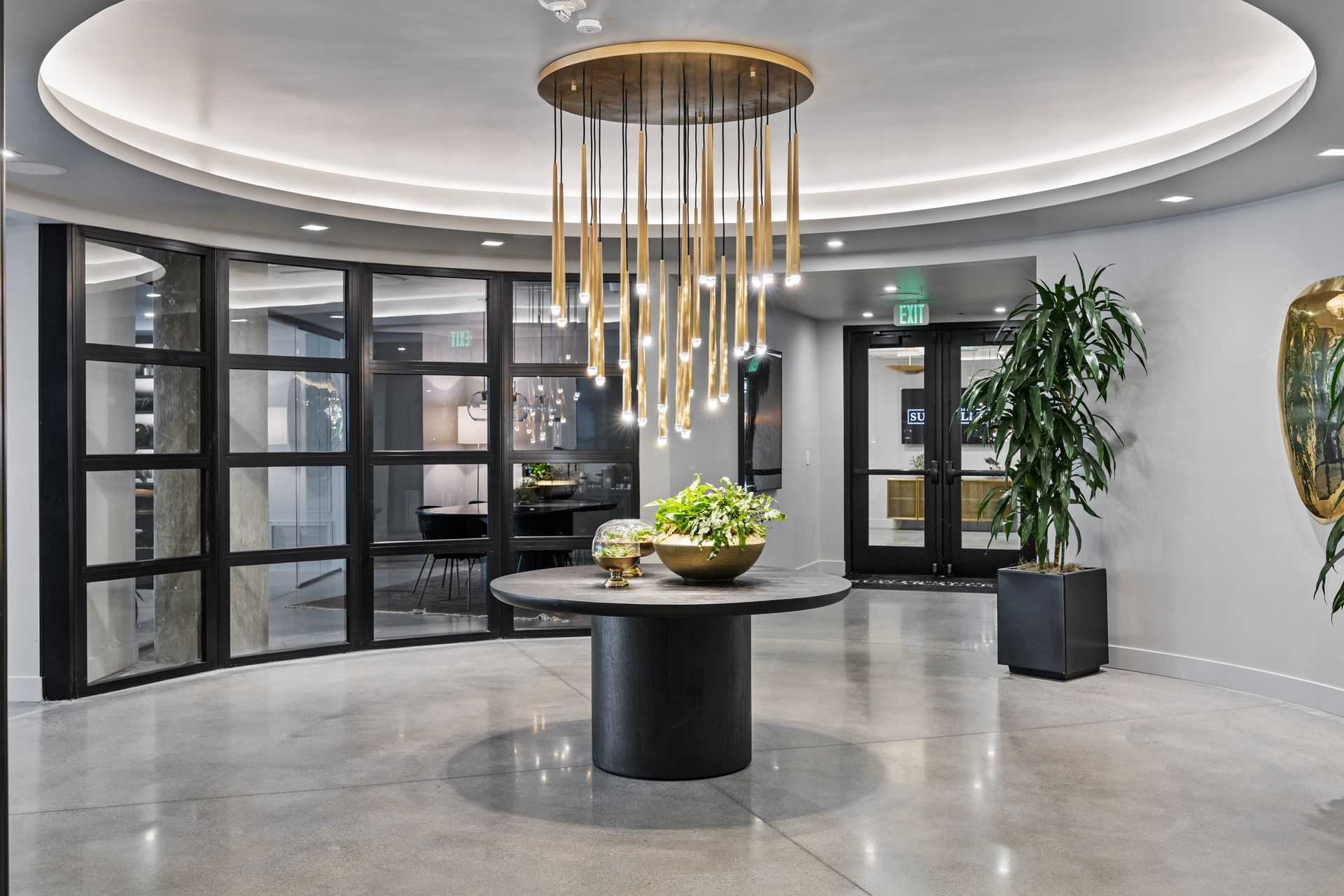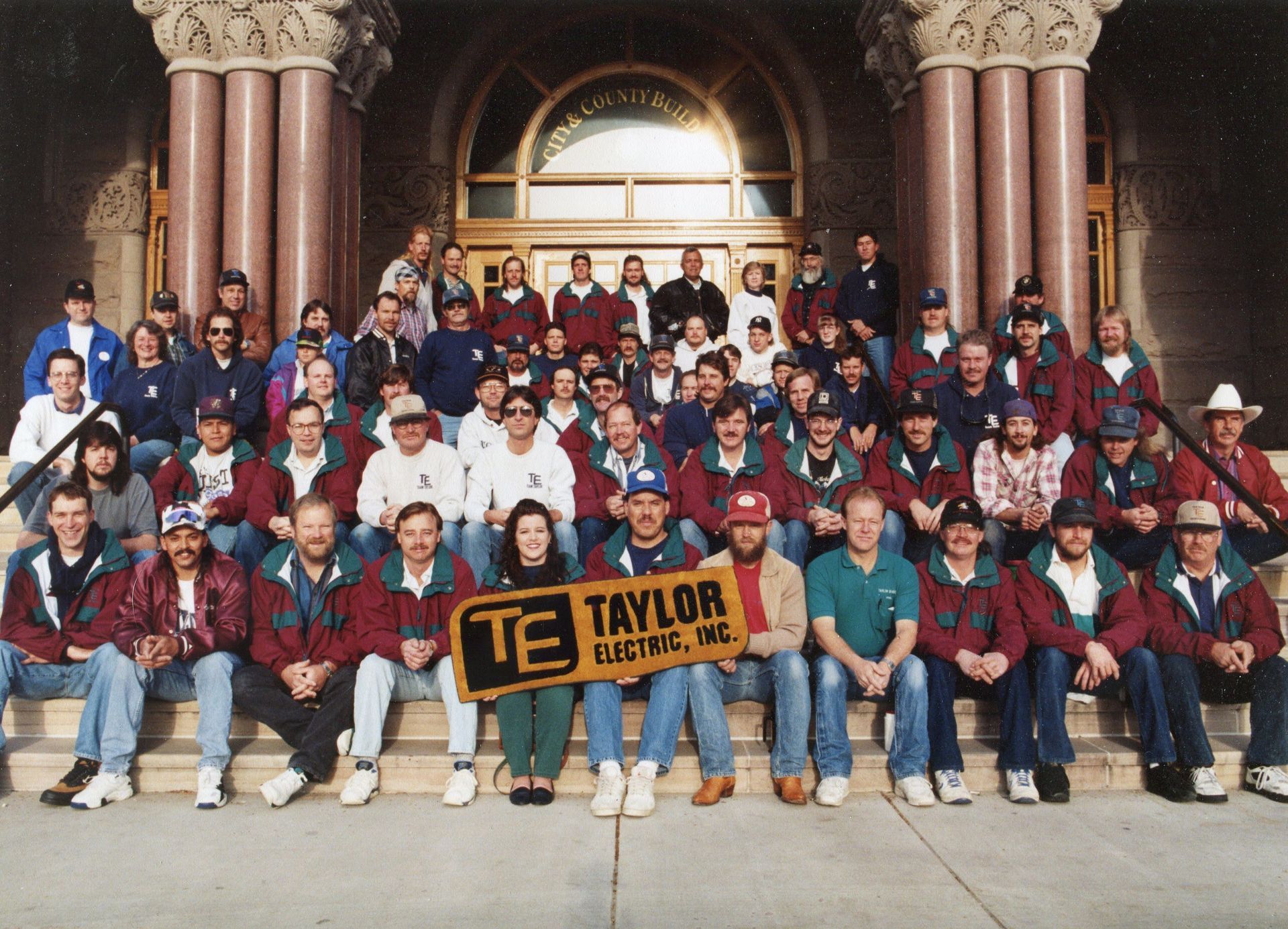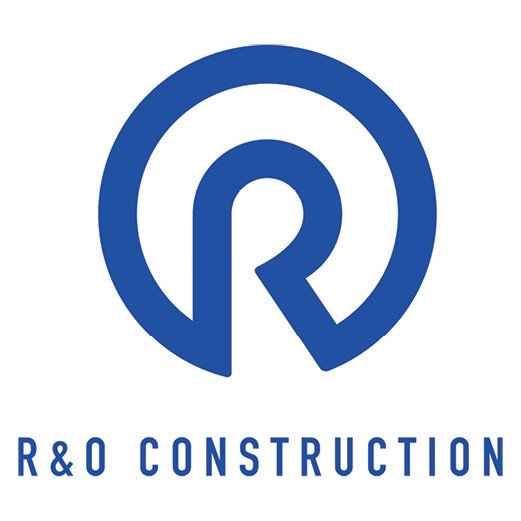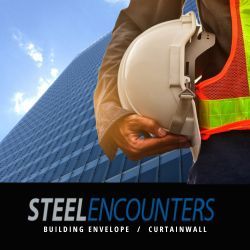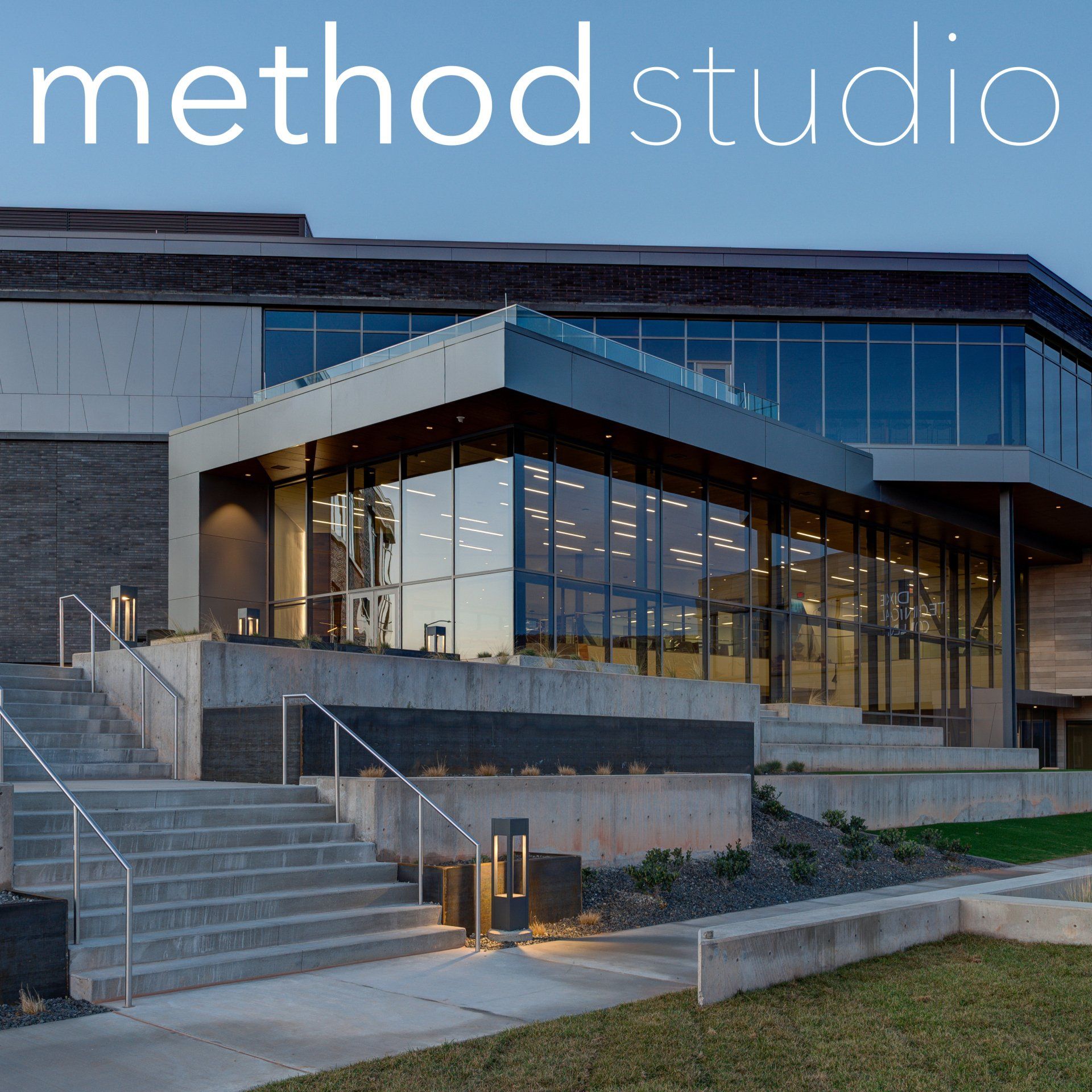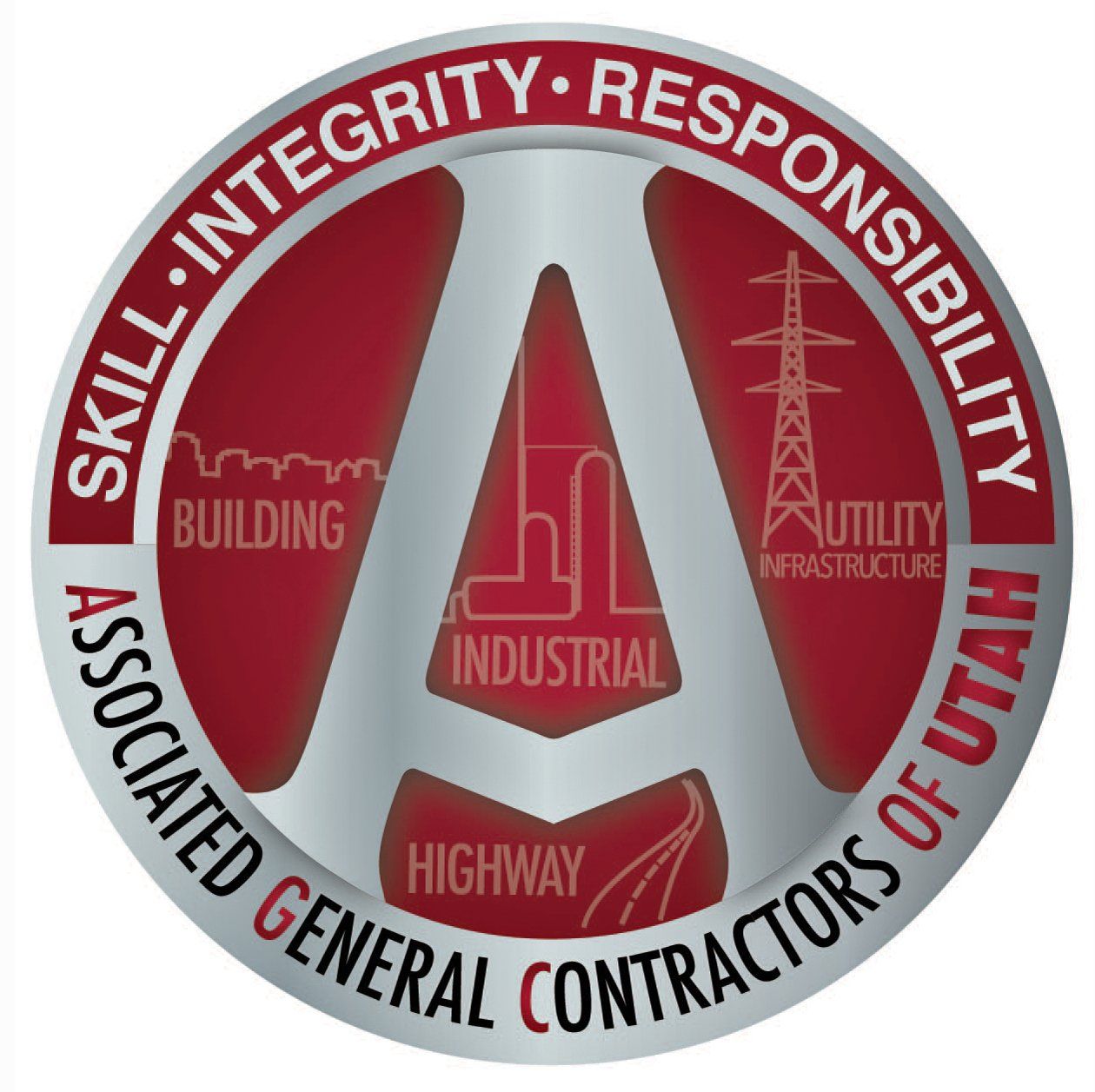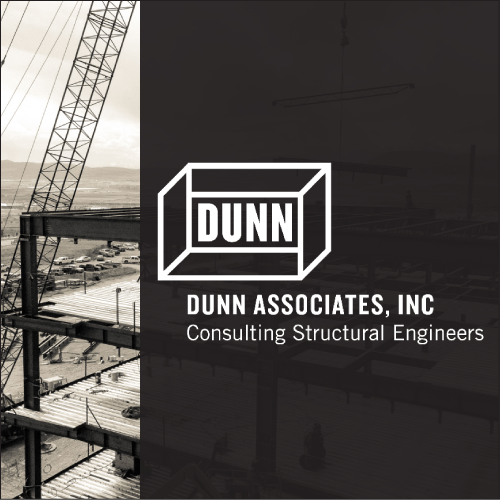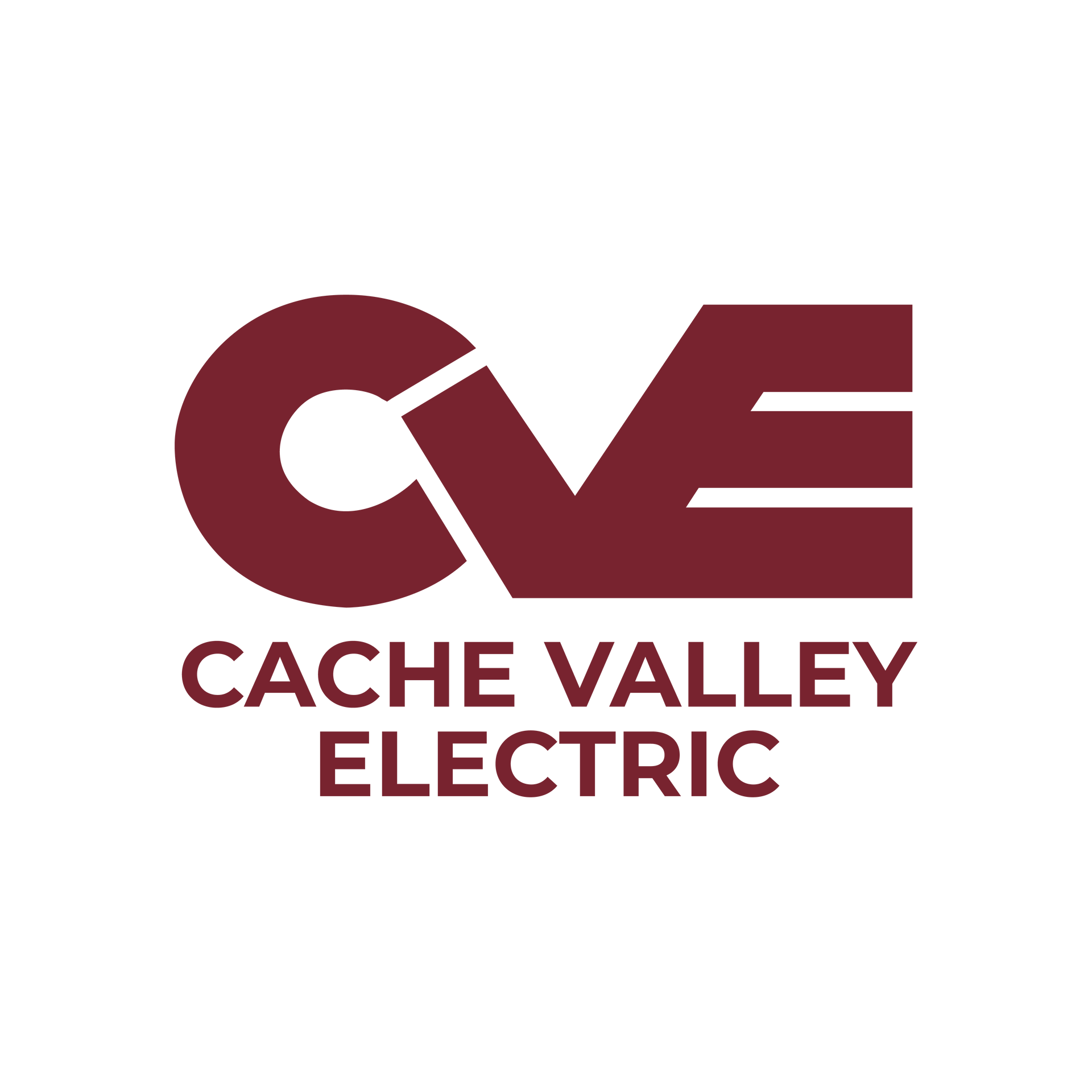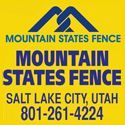A revolutionary green building driver at the time it debuted in 1998, the LEED Rating System remains a force for good in the design of sustainable buildings and is widely credited for helping raise A/E/C industry baseline standards. By Brad Fullmer
The Noelle E. Cockett Life Sciences Building at Utah State University in Logan was completed in 2018 and achieved LEED Gold certification. (photo courtesy VCBO Architecture)
Evolution of LEED and Sustainability in Utah
It took the USGBC several years to develop and implement its LEED rating system, which focuses on seven main areas: Sustainable Sites, Water Efficiency, Energy and Atmosphere, Materials and Resources, Indoor Environmental Quality, Innovation in Design Process, Regional Priority. Buildings are awarded "points" based on meeting certain environmental-based criteria. Four levels of certification are offered, depending on how many points are obtained. Initially, 40 points were offered via LEED v1, and 69 points for v2. When LEED v3 was released in 2007 (subsequently updated in 2009), designers could chase 110 points, with 40-49 being Certified and 80 and over being Platinum.
USGBC included 13 pilot projects nationally in the first wave of buildings to obtain LEED Certified status in March 2000, including a very prominent one in Utah—the Utah Olympic Speed Skating Oval in Kearns, completed in February 2001. Salt Lake-based GSBS Architects was the lead design firm, and it was constructed by Sandy-based Layton Construction, laying the foundation for the green building movement locally.
While the LEED rating system was an exciting new initiative for designers, hitting the requisite amount of points the first time around offered a significant learning curve.
"The most notable feature of the process was the innovation and collaboration required to move forward," said Garth Shaw, Principal and Director of Sustainability for GSBS, about getting that unique building LEED Certified, once David Brems, a Founding Principal, established it as one of the 13 USGBC pilot projects.
Shaw often cites low-VOC paint as an example of that initial learning curve, explaining that 25 years ago even major paint manufacturers weren't cognizant of the VOC level in their product, which led to a series of calls to get the right data.
"Today, low-VOC products are abundant, their negative health impact widely known," said Shaw. "Most interior finish products post their VOC content right on the packaging. In 1998-98, (manufacturers) did not have information readily available about the VOC content of their products."
Another collaborative effort was understanding the reflectivity of standard gray concrete as a way to reduce the heat island effect, which led to working with a transportation engineer who was researching concrete reflectivity for highway barriers.
"It illustrated the Utah Olympic Organizing Committee's commitment to sustainability, and the spirit of innovation our state likes to project," Shaw added.
Since the turn of the century, hundreds of projects in Utah have achieved some level of certification (specific numbers were hard to confirm; a search of Utah in USGBC website lists 696 total projects), including LEED for New Construction (NC), LEED for Building Design and Construction (BD+C), LEED for Interior Design and Construction (ID+C), LEED for Building Operations and Maintenance (O+M) and LEED for Neighborhood Development (ND). Some of these categories are further broken down by market segment.
The USGBC has done a commendable job evolving its rating system over the years, with updates/improvements made every few years. LEED 2.0 quickly surpassed the original version in 2000, LEED 3.0 (called v2009) was released in 2009, LEED 4.0 followed 2013, and LEED 4.1 hit the streets in 2019. LEED 5.0 is nearing completion and in the midst of getting launched, with a public comment period running from April 3-May 20, 2024, on the Beta version, and a launch date of early 2025 targeted.
According to Charlie Woodruff, Mountain Region Director for the USGBC, LEED 5.0 signifies how "the rating system evolves with the market," he said. "It's hard to please everybody as all markets are different, but this rating system has significant improvements."
Woodruff mentioned how USGBC "is making it more accessible for owners to do O&M (operations and maintenance) certification based on performance data on things like energy, water, transportation, waste, the human experience. Cushman Wakefield has done a handful of office certifications and it's a new trend the last couple of years."
The announcement of yet another version of LEED is strategic, said Garth Shaw, Principal and Sustainability Director for GSBS Architects, and a LEED BD+C AP (accredited professional)—a way for USGBC to maintain relevance and keep their place atop the burgeoning list of third-party sustainable ratings groups.
"The USGBC's goal is market transformation," said Shaw. "That goal dictates that every new version pushes the industry to create ever-more sustainable buildings. In version 4, the USGBC rebalanced credit points to emphasize community connection, material selection, and energy performance. We understand that version 5 will maintain a focus on these elements of sustainability and add a special focus on reducing embodied carbon and operational carbon emissions."
And while the pros far outweigh the cons when it comes to LEED, it isn't the perfect system.
"It is applied as if it were a minimum-standard based code; as such, building teams and owners underestimate its value, but also the rigorous process required to be successful," said Shaw. "This has led to failures and, in many cases, a perception that creating a certified LEED project is about spending money for a plaque on the wall."
Utah has fared pretty well on a national level in getting projects LEED certified, although nowhere near what states with sizeable metro areas like California (L.A., San Francisco) and Washington (Seattle) are doing on a square foot basis per capita. According to the USGBC, Utah ranked No. 10 in 2015 in square footage of LEED projects per capita at 1.63 (31 total projects) and was No. 9 in 2021 at 1.48 (21 projects). The past two years, Utah has slipped to middle-of-the-pack status, a sign of some LEED fatigue from local owners.
"LEED still has a presence in Utah, but it feels somewhat secondary to a strong sustainability market," said Shaw. "We find when our clients are interested in sustainability there isn't a specific drive to certification systems as much as environmental performance. We are still making strides on our projects but have fewer LEED certified work in the current market."
Shaw said GSBS only designed one LEED certified project (v4.0 Gold), Lindquist Hall at Weber State University since 2019, but noted an uptick of current projects aiming for LEED, including a v4.1 Commercial Interiors certification for the firm's recent office renovation, and several notable projects for higher education and ski industry clients, which will aim for certification in the next 12-18 months upon completion.
Daybreak Library in Herriman was completed in 2022 and achieved LEED Gold certification. Architectural Nexus’ Salt Lake Office (below) achieved LEED Platinum certification. (photos courtesy Architectural Nexus)
Public Owners Often Drive LEED
Public and municipal owners, particularly ones like Federal behemoth, General Services Administration (GSA), have been advocates of LEED and drivers of requiring certification for new and renovated projects. The GSA started requiring all of its federal projects to achieve basic LEED Certified status in 2003; which evolved to LEED Silver in 2007, and LEED Gold in 2010.
Locally, Salt Lake City Corp. initially passed an executive order in 2006 stating that all new and renovated projects would aim for LEED Silver certification. The City then drafted a comprehensive Energy Management executive order in 2015 along with an Elevate Buildings program in 2016—designed with the intent to improve indoor air quality and energy efficiency.
The State of Utah's Division of Facilities Construction and Management (DFCM) is the largest single owner in the Beehive State, with nearly 3,800 total buildings totaling $12 billion in value to look after. According to Cox, sustainability has always been a high priority for DFCM, which devised and released its own rating system—the High-Performance Building Standard (HPBS)—in 2006.
Cox said this version was "LEED-like" with a setup that had most of the requirements for a formal certification process. Over the next two years, many institutions of higher education nationwide signed the American College & University Presidents' Climate Commitment (ACUPCC) and pushed for the adoption of a formal LEED standard, which by 2009 was revised to require LEED Silver certification.
In 2011, DFCM began implementing enclosure performance measures like the whole building air test (WBAT) and standardizing systems commissioning procedures.
"DFCM wants predictable, reliable, efficient, and durable systems that promote healthy and productive workspaces," Cox surmised. "While covered in LEED, it was clear to us that requiring more in-depth design reviews under the premise that everything would be field tested produced better outcomes. This translates to fewer roof leaks, improved access to natural light, ventilation systems that are field tested to meet our requirements, and at the same time, reduce the overall cost of ownership."
DFCM revised its performance metrics even further, with a revision of HPBS in 2014 that removes the LEED certification requirement from major universities, while still offering optimum sustainability.
"Knowing our big Universities would continue to pursue LEED, the revisions made [in 2014] complimented LEED and delivered LEED Silver or better performance," Cox added. "In short, LEED heavily influenced the HPBS."
Cox shared an example of 2013 LEED Certified technical college to a similar non-certified technical college completed in 2015. The 2015 project included in-depth design reviews and enhanced field testing. The "outcome-based approach" yielded nearly 50% energy cost savings and cut O&M costs by 37% vs. the 2013 project, which Cox said translates into over $10 million saved over the life of the building.
The Salt Lake City Department of Airports is also pro-LEED, with the first phase of the overall four-phase, $5.1 billion "New SLC" airport redevelopment earning LEED Gold status in September 2021.
Other notable LEED projects in Utah include:
—175,000 SF Daybreak Corporate Center in South Jordan, the first LEED Platinum certified project in 2010.
—Alta Stone at the Gateway Apartments, the first LEED Platinum Multi-Family project.
—Architectural Nexus' Salt Lake Office, certified LEED Platinum in 2011.
Nexus' Salt Lake City 30,000 SF office is a fantastic adaptive reuse of a 1950s-built structure that earned LEED NC v3 (2009) Platinum by earning 80 points—illustrating the firm's initiative to "walk the walk" by investing in the health and well-being of its 90+ employees.
McBride said the firm's Sacramento office is LEED NC v4 Platinum and Living Certified by the International Living Foundation, while the Salt Lake office is LEED Platinum v3 and also pursuing Petal Certification from the International Living Future Institute (ILFI), a far more rigorous level of sustainability compared to LEED, and one of several "green building" rating systems that have popped up in the past 20 years.
"We see many of our government and civic clients continue to pursue LEED because it is mandated or required by regulation or legislation," McBride said. "Many private owners are either doing it because it is part of their business values or if they are marketing to a demographic that values sustainable design. Even then, many clients are electing to establish their own set of sustainable criteria (rather than using LEED or another third-party rating system) and marketing independent and specific features and initiatives that their project highlights."
The Utah Olympic Speed Skating Oval is Utah’s first LEED Certified building and one of 13 original projects from USGBC’s LEED Pilot program in 2001. (top photo courtesy GSBS Architects; bottom photo by Leo Geis, courtesy VBFA)
LEED Opinions Vary Among Private Developers
Opinions of LEED among private owners and developers vary widely, often based on a company's philosophy of developing and holding long-term vs. flipping properties within five years.
"In all honesty, I have a love/hate relationship with LEED," said Daniel Thomas, Regional Partner for St. John Properties (SJP) in Pleasant Grove, an active developer in Utah since 2013 with 1.2 million SF in 30 buildings on four developments. The company is a Top 5 LEED developer in the nation per USGBC, with six million SF of space in just over 100 LEED certified projects, including Valley Grove III in Pleasant Grove as of April 2024.
Thomas believes LEED has good intentions and offers a good structure for developers, but the process itself has become cumbersome and taxing, particularly the past five years.
"There is immense value in the true environmental and sustainable intent of LEED," he said, "but as newer versions have come out the benefits are being outpaced by the bureaucracy and costs."
At the ribbon cutting April 19 of the Holcim/Elevate Commercial Roofing Systems & Lining manufacturing and distribution center, a LEED Certified plaque was presented to the owner, Idaho Falls-based Riverbend Management.
"It makes the property more valuable," said Devin Belnap, Vice President of Real Estate Development for Riverbend. "We are long-term owners; we won't sell this building."
Belnap said Riverbend projects—which includes the Ancestry.com and Exactware office buildings in Lehi—have some type of sustainability guideline.
"Most of our projects have long-term sustainable design characteristics, and some of them are LEED certified," he said. "If I'm buying a building and I know it's LEED certified, I know I'm getting a good product."
Brad Holmes, President of Sandy-based Larry H. Miller Real Estate, said his company is committed to developing sustainable projects, but LEED doesn't necessarily fit their overall vision, despite being a notable program.
"We have a desire to build sustainable projects," said Holmes, citing LHM's purchase of Daybreak in April 2021, along with its development of a Downtown Daybreak area that includes the new Salt Lake Bees Ballpark for Utah's Triple-A baseball team. "We look at not just a (specific) building, but rather how walkable a community is [...] or if it is located near transit [...] or how can we recycle water. On all our building projects we'll build to a sustainable metric, but probably not LEED."
The S.J. Quinney College of Law Building at the University of Utah was completed in 2015; it earned LEED Platinum certification, a level most higher education projects don’t pursue. (photos courtesy VCBO Architecture)
LEED, WELL, LBC: What Makes Sense for Owners Today?
The USGBC will forever get credit for the being the first organization to create a comprehensive independent rating system for sustainable buildings, which in turn has spawned several other notable groups looking to make their mark on helping reduce the carbon footprint of the built environment. Some of these include the International Living Future Institute's Living Building Challenge and Petal Certification, the WELL rating system that focuses directly on occupant health and wellness, the Energy Star system promoted by the U.S. Department of Energy and the U.S. Environmental Protection Agency, and Green Globes, a program run by the Green Building Institute. So many choices can leave owners (and designers) wondering what's best for their project.
"For firms creating highly sustainable designs, it is a bit of a post-certification world," said Shaw. "Clients and architects have come to understand that a deeply sustainable project does not have to have a label. In fact, labels can divert meaningful alignment of sustainable features with client values by dictating what the team focuses on.”
"That said," Shaw continued, "the WELL rating system offers a fresh set of criteria focusing directly on occupant wellness. While WELL certification criteria veer widely from traditional building design, teams that address these criteria enhance sustainability in ways that LEED-only projects do not."
Shaw said The Living Building Challenge also offers a "framework for clients that want to go beyond LEED and drastically reduce a project's environmental footprint. These rating systems have a meaningful place in today's design and construction world."
Ward remains partial to LEED in many ways and said it still reigns supreme for its brand recognition.
"The LEED rating system, what it asks you to do, is more par for the course than it's ever been," said Ward. "It's still the best marketing strategy we have for conveying sustainable design. If you say a project is a 'high-performance building', people don't know what that means outside the [A/E/C] industry. If you say it's a LEED Certified building, people know what it means, and that you have done something above and beyond the standard to get that plaque."
Intermountain Healthcare has a baseline design standard of LEED Silver on its projects, including Alta View Hospital in Sandy (top), while Huntsman Cancer Institute Phase IV also earned LEED Silver. (courtesy Architectural Nexus)
